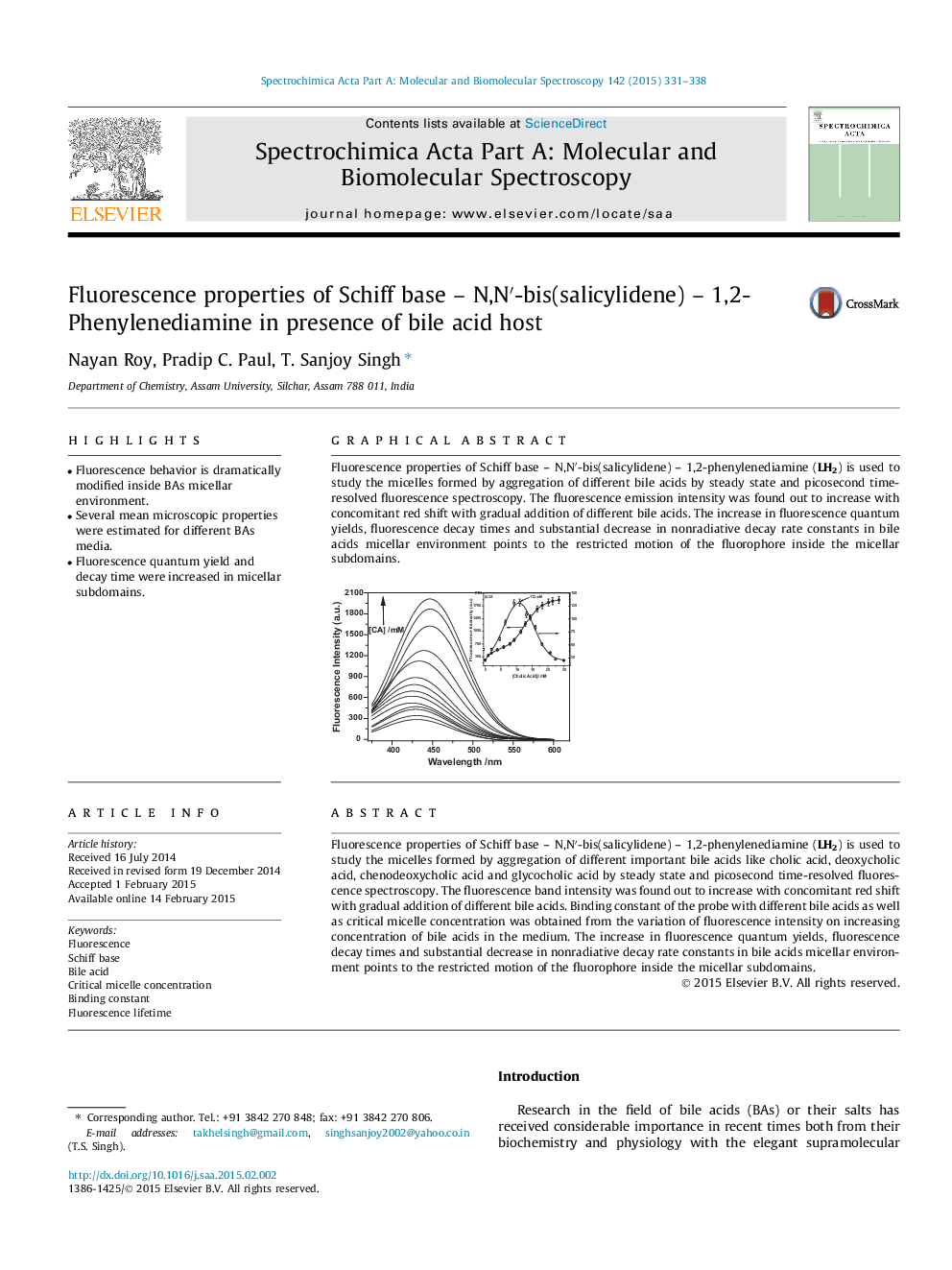| Article ID | Journal | Published Year | Pages | File Type |
|---|---|---|---|---|
| 1229190 | Spectrochimica Acta Part A: Molecular and Biomolecular Spectroscopy | 2015 | 8 Pages |
•Fluorescence behavior is dramatically modified inside BAs micellar environment.•Several mean microscopic properties were estimated for different BAs media.•Fluorescence quantum yield and decay time were increased in micellar subdomains.
Fluorescence properties of Schiff base – N,N′-bis(salicylidene) – 1,2-phenylenediamine (LH2) is used to study the micelles formed by aggregation of different important bile acids like cholic acid, deoxycholic acid, chenodeoxycholic acid and glycocholic acid by steady state and picosecond time-resolved fluorescence spectroscopy. The fluorescence band intensity was found out to increase with concomitant red shift with gradual addition of different bile acids. Binding constant of the probe with different bile acids as well as critical micelle concentration was obtained from the variation of fluorescence intensity on increasing concentration of bile acids in the medium. The increase in fluorescence quantum yields, fluorescence decay times and substantial decrease in nonradiative decay rate constants in bile acids micellar environment points to the restricted motion of the fluorophore inside the micellar subdomains.
Graphical abstractFluorescence properties of Schiff base – N,N′-bis(salicylidene) – 1,2-phenylenediamine (LH2) is used to study the micelles formed by aggregation of different bile acids by steady state and picosecond time-resolved fluorescence spectroscopy. The fluorescence emission intensity was found out to increase with concomitant red shift with gradual addition of different bile acids. The increase in fluorescence quantum yields, fluorescence decay times and substantial decrease in nonradiative decay rate constants in bile acids micellar environment points to the restricted motion of the fluorophore inside the micellar subdomains.Figure optionsDownload full-size imageDownload as PowerPoint slide
